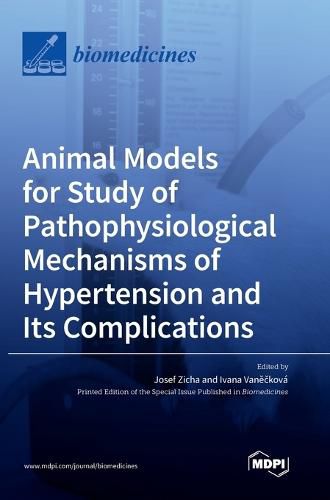Readings Newsletter
Become a Readings Member to make your shopping experience even easier.
Sign in or sign up for free!
You’re not far away from qualifying for FREE standard shipping within Australia
You’ve qualified for FREE standard shipping within Australia
The cart is loading…






This title is printed to order. This book may have been self-published. If so, we cannot guarantee the quality of the content. In the main most books will have gone through the editing process however some may not. We therefore suggest that you be aware of this before ordering this book. If in doubt check either the author or publisher’s details as we are unable to accept any returns unless they are faulty. Please contact us if you have any questions.
Essential hypertension is still an important health care problem. It is necessary to investigate its mechanisms in animal models. The potential clinical importance of such experimental research might be expected. This Special Issue concerned several important topics. First, several studies focused on the pathophysiological mechanisms responsible for blood pressure elevation during hypertension development, organ damage in chronic hypertension, and drugs targeting hypertension and/or its complications. Other studies were interested in the participation of central and peripheral blood pressure control, changes in vascular structure and function, and neural, humoral, and endocrine factors. Furthermore, the contribution of altered redox signaling, chronic inflammation, microbiome changes, and interactions of genetic and environmental factors were evaluated in multiple papers. Finally, special attention was paid to the progress in pharmacological tools for the control of hypertension and associated organ damage, genetic modifications to alter blood pressure levels, and non-pharmacological interventions attenuating hypertension or its complications. The original articles or reviews covered the interesting aspects of the pathophysiology of hypertension and associated end-organ damage, the use of various experimental hypertensive models, and the importance of specific environmental factors acting in distinct phases of the ontogeny. We especially appreciate the presentation of new ideas and the critical discussion of traditional theories.
$9.00 standard shipping within Australia
FREE standard shipping within Australia for orders over $100.00
Express & International shipping calculated at checkout
This title is printed to order. This book may have been self-published. If so, we cannot guarantee the quality of the content. In the main most books will have gone through the editing process however some may not. We therefore suggest that you be aware of this before ordering this book. If in doubt check either the author or publisher’s details as we are unable to accept any returns unless they are faulty. Please contact us if you have any questions.
Essential hypertension is still an important health care problem. It is necessary to investigate its mechanisms in animal models. The potential clinical importance of such experimental research might be expected. This Special Issue concerned several important topics. First, several studies focused on the pathophysiological mechanisms responsible for blood pressure elevation during hypertension development, organ damage in chronic hypertension, and drugs targeting hypertension and/or its complications. Other studies were interested in the participation of central and peripheral blood pressure control, changes in vascular structure and function, and neural, humoral, and endocrine factors. Furthermore, the contribution of altered redox signaling, chronic inflammation, microbiome changes, and interactions of genetic and environmental factors were evaluated in multiple papers. Finally, special attention was paid to the progress in pharmacological tools for the control of hypertension and associated organ damage, genetic modifications to alter blood pressure levels, and non-pharmacological interventions attenuating hypertension or its complications. The original articles or reviews covered the interesting aspects of the pathophysiology of hypertension and associated end-organ damage, the use of various experimental hypertensive models, and the importance of specific environmental factors acting in distinct phases of the ontogeny. We especially appreciate the presentation of new ideas and the critical discussion of traditional theories.